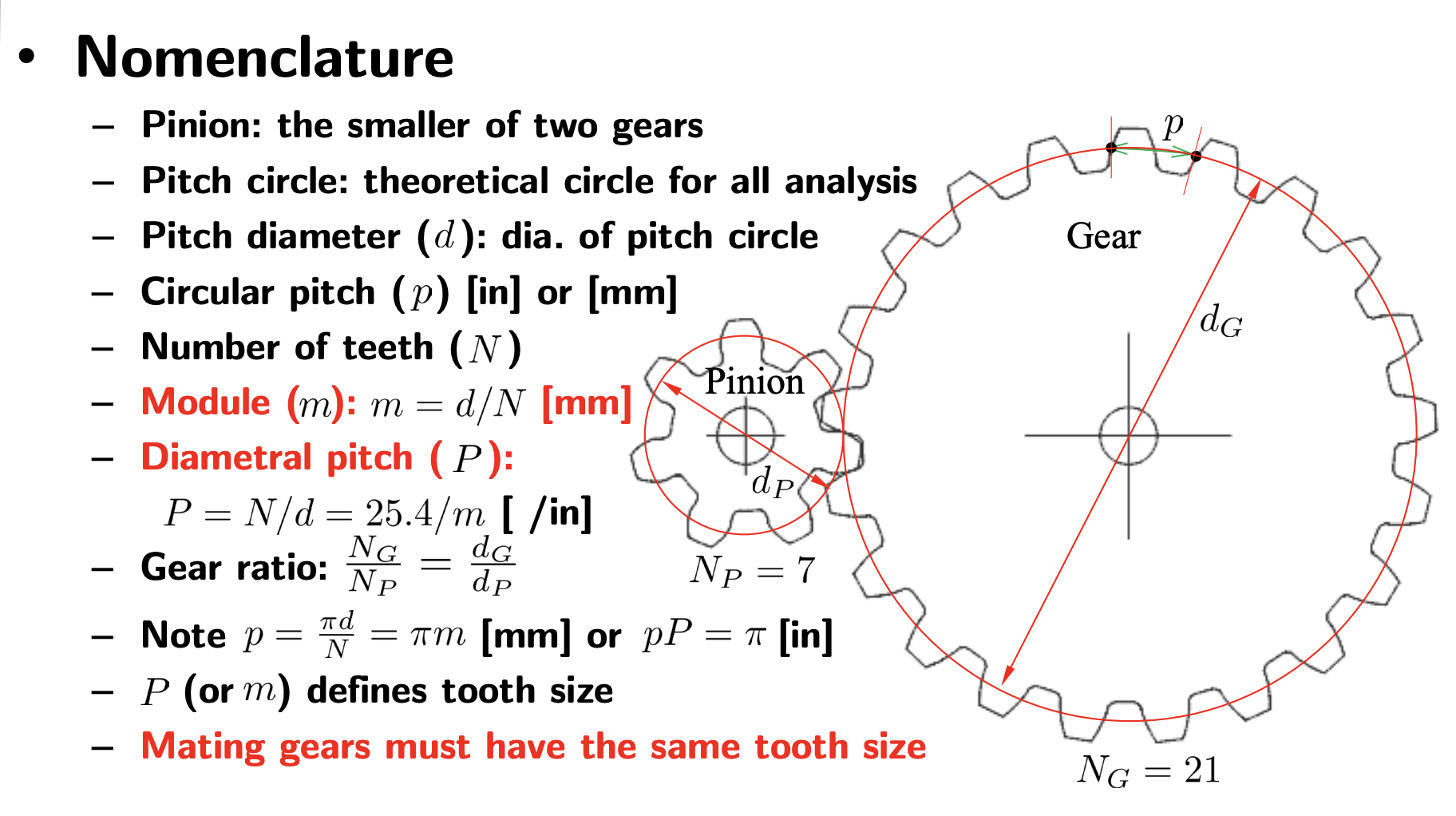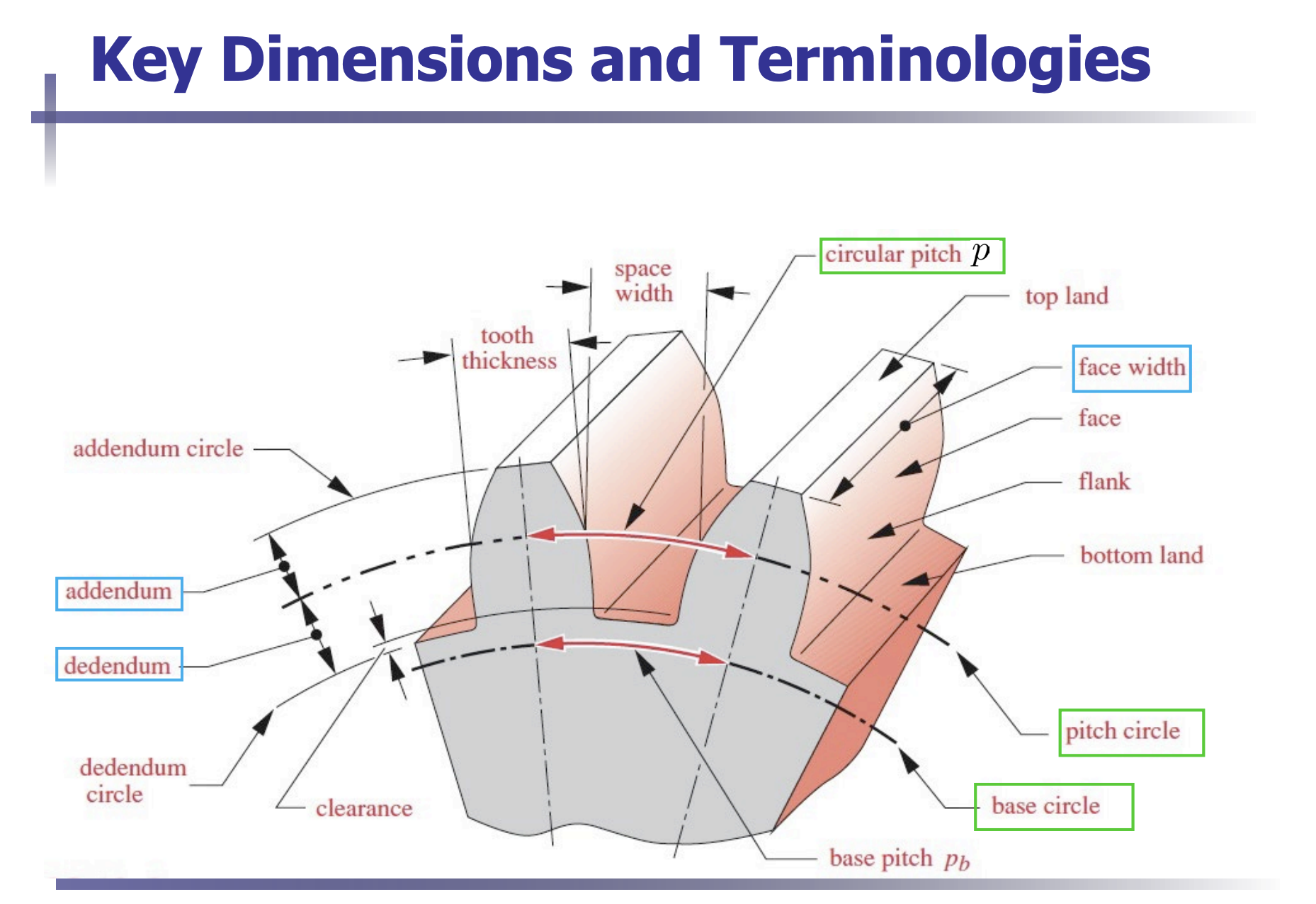Nomenclature
- Pinion: The smaller of two gears. The larger is often called the gear.
- Pitch circle: Theoretical circle for analysis. The pitch circles of a pair of mating gears are tangent to each other.
- Pitch diameter (): Diameter of pitch circle
- Circular pitch (): Distance between teeth. Measured from the from a point on one tooth to a corresponding point on an adjacent tooth. This can be thought of as the sum of the tooth thickness and the width of space.
- Units of or
- Note that (circumference divided by number of teeth)
- Number of teeth ()
- Module (): .
- Diametrical pitch (): Number of teeth divided by diameter.
- This includes a conversion from mm to in, since 1 in = 25.4 mm
- Note that
- Gear ratio:
- Addendum (): Radial distance between the top land and the pitch circle.
- Dedendum (): Radial distance from the bottom land to the pitch circle.
- Whole depth (): Sum of the addendum and dedendum
- Clearance circle: Circle that is tangent to the addendum circle of the mating gear.
- Clearance (): Amount by which the dedendum in a given gear exceeds the addendum of its mating gear.
- Backlash: Amount by which the width of a tooth space exceeds the thickness of the engaging tooth measured on the pitch circles.
- Mating gears must have the same tooth size




- Addendum , Dedendum
- Pressure angle typically
Example: Basic Gear Parameters
Question
A gearset consists of a 16-tooth pinion driving 40-tooth gear. The diametral pitch is 2 and pressure angle .
- (a) Compute circular pitch, center distance, radii of base circles
- (b) Compute addendum and dedendum
- (c) In mounting this gear set, the center distance was incorrectly made 1/4 inch larger. Compute the new values of the pressure angle and the pitch-circle diameters.
We have:
Since , we have .
(a) We can calculate circular pitch to be:
Center distance is:
Base circle radii:
(b) Addendum:
Dedendum:
(c) The center distance was made a 1/4 inch larger, so we have:
We still have the same gear ratio:
Solving this gives:
Since the base circle remains the same, we have